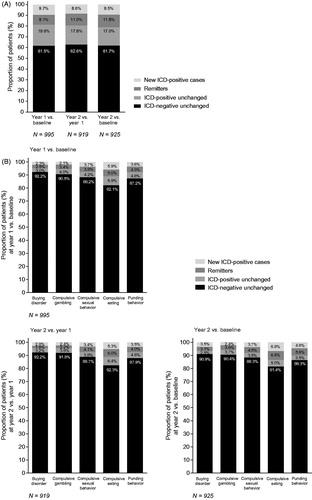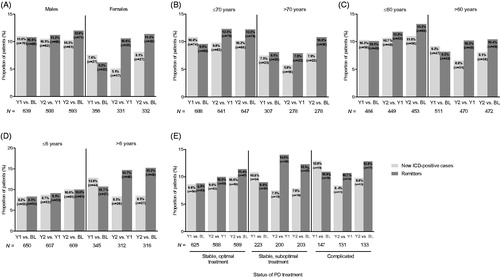Figures & data
Table 1. Definition of year 1 incidence and cumulative 2-year incidence.
Table 2. Definition of shift in ICD status at year 1 versus baseline and year 2 versus year 1 or baseline.
Table 3. Baseline characteristics of patients negative for ICD at baseline according to subsequent ICD status at either post-baseline visit (FAS).
Figure 1. ICD status (“new cases” and “remitters”) by modified MIDI, (A) overall ICD behaviors and (B) ICD behavior subtypes (FAS). Abbreviations. ICD, impulsive control disorder; MIDI, Minnesota Impulsive Disorders Interview; PD, Parkinson’s disease.

Figure 2. ICD status (“new cases” and “remitters”) by: (A) gender, (B) age at baseline, (C) age at PD onset, (D) PD duration at baseline, and (E) disease status according to PD treatment at baseline. Abbreviations. BL, baseline; ICD, impulsive control disorder; MIDI, Minnesota Impulsive Disorders Interview; PD, Parkinson’s disease; Y, year.

Table 4. ICD subtype status (“new cases” and “remitters”) at post-baseline visits by demographic and clinical features at baseline (FAS).
